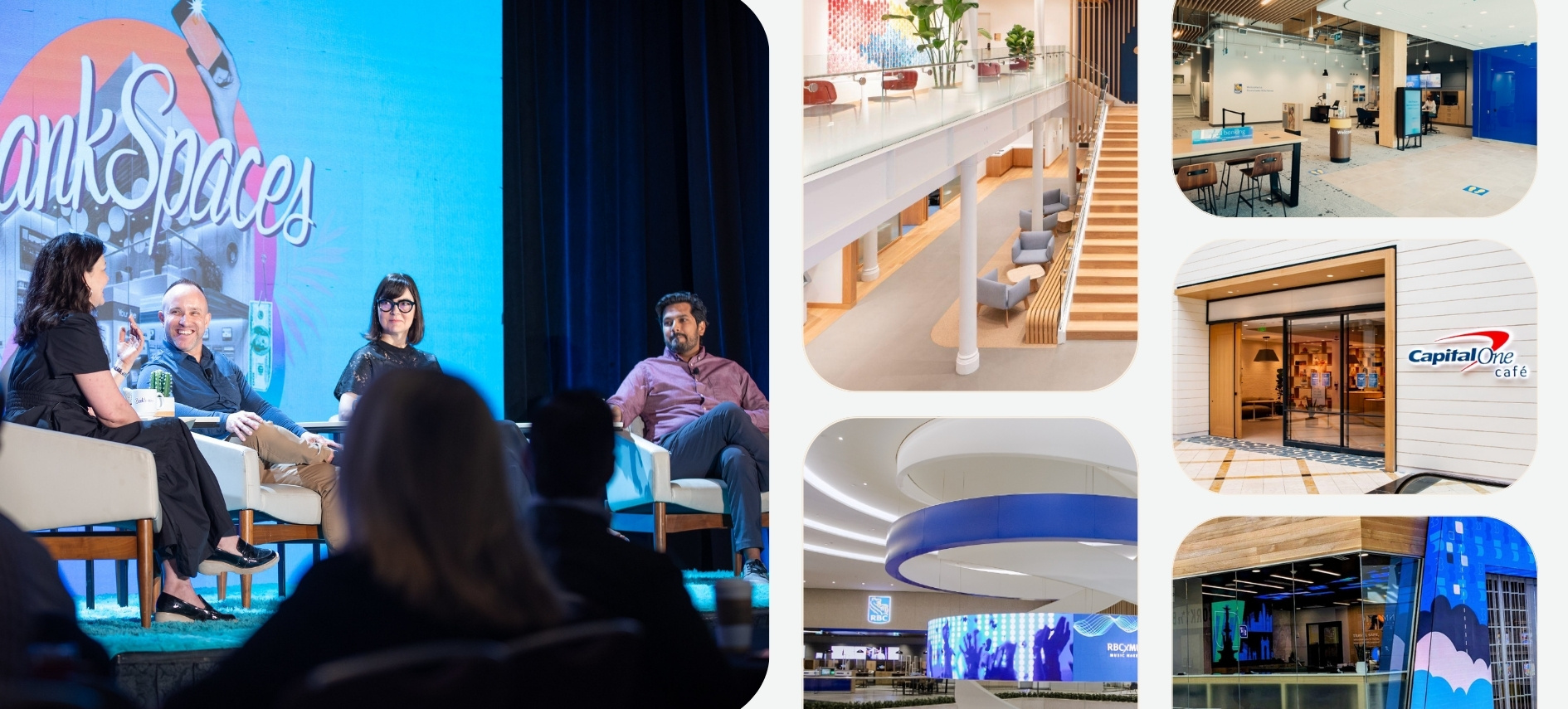Over the past 100 years, bank customers’ needs haven’t changed that much. What has changed - in a big way in recent years - are their wants and expectations when entering their local branch. To be successful, branch design leaders must continually pivot to ensure they are staying ahead of this evolution.
"While the core needs of banking clients have remained relatively consistent, the channels through which these needs are met have undergone a massive transformation," Gina Hermida, Director of Global Design at RBC, said at BankSpaces. “It’s complicated, but we have to make sure we are on par with where our clients are.”
Hermida joined Matt Bosserman, VP, Head of Retail Design and Premium Experiences at Capital One; Vikas Srivastrava, VP, Retail Design Lead at Fifth Third Bank; and Helen Herrick, Principal at MBH Architects, for a discussion on how to create branches that cater to the changing needs and expectations of customers, best practices in technology integration, and fostering authentic community connections.
As customer expectations continue to evolve in the digital age, banks are faced with the challenge of designing branches that seamlessly blend technology with human interaction.
Prioritizing customer needs, embracing flexibility, and creating spaces that allow for the development of relationships with clients were key themes that emerged from the discussion.
“Creating an emotional connection with customers should be the primary focus of branch design. Why does a customer cross that threshold? They are looking for answers to difficult questions, a place that’s welcoming,” Bosserman said. “But the bar is being raised. Speed, seamlessness, customer service, the way that technology is integrated in a way that feels authentic. You need to be excellent in all these aspects.”
Panelists stressed the need for strategic branch design that integrates technology to enhance, not replace, human interaction. They emphasized that digital tools - as popular as they are becoming - should complement the customer experience and support the creation of sustainable relationships, rather than serving as a substitute for personal service.
Herrick, who moderated the discussion, said technology absolutely has its place in the mosaic of services offered to customers, but integrating technology just for technology’s sake can be shortsighted.
“It's essential to ensure that both digital and physical touchpoints are cohesive and complementary," she said.
Panelists also said branch design leaders need to create spaces that foster authentic community engagement and create a feeling of connection with their local branch. Providing flexible spaces for local organizations and fostering genuine connections through branch staff can help banks establish a strong local presence while also advancing client loyalty.
“They (branch staff) need to let the community know that these spaces even exist for them, because if they don’t, it’s just unused real estate,” Srivastrava said. 
Vikas Srivastrava, VP, Retail Design Lead at Fifth Third Bank
Important, many on the panel said, was the need to integrate the ideas and opinions of on-the-ground staff into design plans. Afterall, those on the front lines are often aware of the unique needs, challenges, and desires of those they interact with – sometimes more than those designing the branch itself.
"Engaging local branch teams in the design process is crucial,” Srivastrava said. “They have valuable insights into the needs of their community, and probably know more than you do about what those needs are.
Kerrick agreed, adding that the team working in a particular neighborhood needs to know the area, adding that it’s also essential to listen to the people who live there.
“That way, we as designers can design spaces that will actually be used,” she said. "Engaging all stakeholders, particularly those with informal influence within the organization and existing or potential customers, can help streamline the decision-making process and ensure that the final design aligns with the brand's vision."

Gina Hermida, Director of Global Design at RBC
Hermida echoed this sentiment, adding that engaging with diverse communities and seeking their input during the design process is also essential to creating accessible spaces for all. She shared an example of how RBC engaged with indigenous communities in Canada when designing a client-facing space, highlighting the importance of having difficult but necessary conversations to ensure that the final design is respectful, meaningful, and impactful.
"Engaging with diverse communities and seeking their input is essential to create inclusive and welcoming spaces," Hermida said. “You have to have those conversations, even if they’re difficult.”
Posted by
Branching into Tomorrow – Together.
Exploring the Future of Bank Branch Design + Technology
April 19-21, 2026 | Bonita Springs, FL




-Dec-04-2025-03-32-25-8096-PM.png)
-1.png)




Comments